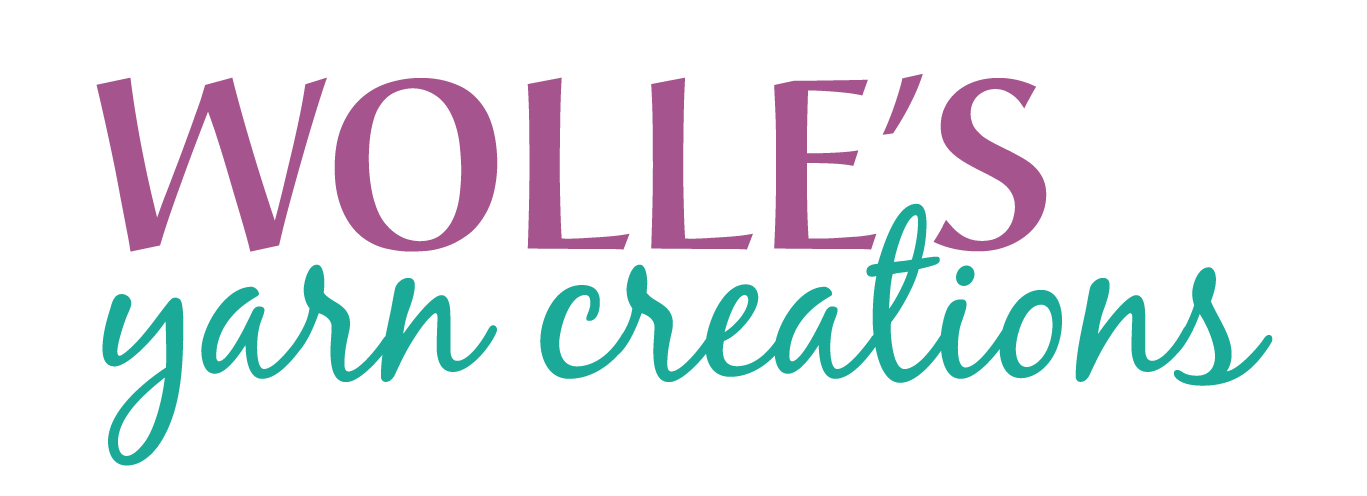Log Cabin Mural, or The Story of a Blanket that became a Wall Hanging
It started with the idea to knit a log cabin pattern. Something colorful. And out of yarn leftovers.
Log cabin designs are widely available in all kind of sizes and shapes. Yet I wanted something slightly different (= asymmetrical), so I came up with my own.
I also like to keep things interesting and thus chose seven colors that each repeat four times.
Initially, I was thinking of knitting a blanket. Since a blanket is a very large project that would require very long rows, I decided to create separate log cabin squares which I would sew together.
Choosing the colors and knitting the squares was fun and enjoyable, but after four squares I had enough. Therefore, I scrapped the idea of a blanket and made a mural instead.
After finishing the four squares, they lingered for 1.5 years waiting for my mother to visit. She lives in Germany and we had to postpone her flight several times because of the pandemic. She finally arrived and expertly added a cloth backing to my squares and thus turned this project into a beautiful wall handing that now decorates my living room.
Yarn Details:
Each square is 20 x 20 inches (50 x 50 cm) large
Each square consists of 7 colors; each color repeats 4 times, with the exception of the first color which repeats 5x
Each square uses a total of 90-95 gr of our fingering weight yarn (appr. 430 - 450 yards) on a size US 5 needle (3.5 mm)
We have kits available HERE; kits consist of 7 x 25 gr = 175 gr (840 yards); kits provide enough yarn to make the log cabin squares larger and/or knit at a larger gauge. (The colors I used for my squares may differ from the kit colors).
Pattern Notes:
Everything is knitted in garter stitch ( = knitting every row)
Each log cabin square consists of 29 sections; each section is picked up + knitted onto the previous one
This graphic below shows the changing knitting directions; each log cabin square starts in the center (#1) and is then worked outwards (#2 - #29). Squares can easily be made larger or smaller by adding/subtracting sections as desired.
The asymmetrical design is created by alternating the width of sections. For example, #3 and #4 consist of four garter stitch ridges; #5 and #6 have eight ridges; #7 and #8 have again four ridges, and so on.
Pattern:
Color 1 (Section #1): Cast on 22 stitches and knit 36 rows (= 18 garter stitch ridges); bind off 21 stitches, leaving the last stitch on the needle; cut Color 1 and switch to
Color 2 (Section #2): With one stitch still on the needle, pick up + knit 17 more stitches (= 18 st total) along the side of the first color-square; knit 16 rows (= 8 garter stitch ridges); bind off all stitches except the last one, cut Color 2 and switch to
Color 3 (Section #3): With one stitch still on the needle, pick up + knit 29 more st (= 30 st total) along the side of the second color section; knit 8 rows (= 4 garter st ridges); bind off all stitches except the last one, cut Color 3 and switch to
Color 4 (Section #4): With one stitch still on the needle, pick up + knit 21 more st (= 22 st total) along the side of the previous sections; knit 8 rows (= 4 garter st ridges); bind off all stitches except the last one, cut Color 4 and switch to
Color 5 (Section #5): Pick up + knit 33 more st (= 34 st total) along the previous sections (see diagram); knit 16 rows (= 8 garter st ridges); bind off as before, cut Color 5 and switch to
Color 6 (Section #6): Pick up + knit 29 more st (=30 st total) as before; knit 16 rows (= 8 garter st ridges); bind off as before, cut Color 6 and switch to
Color 7 (Section #7): Pick up + knit 41 more st (=42 st total) as before; knit 8 rows (= 4 garter st ridges); bind off as before, cut Color 7 and switch back to
Color 1 (Section #8): Continue in the established sequence above.





